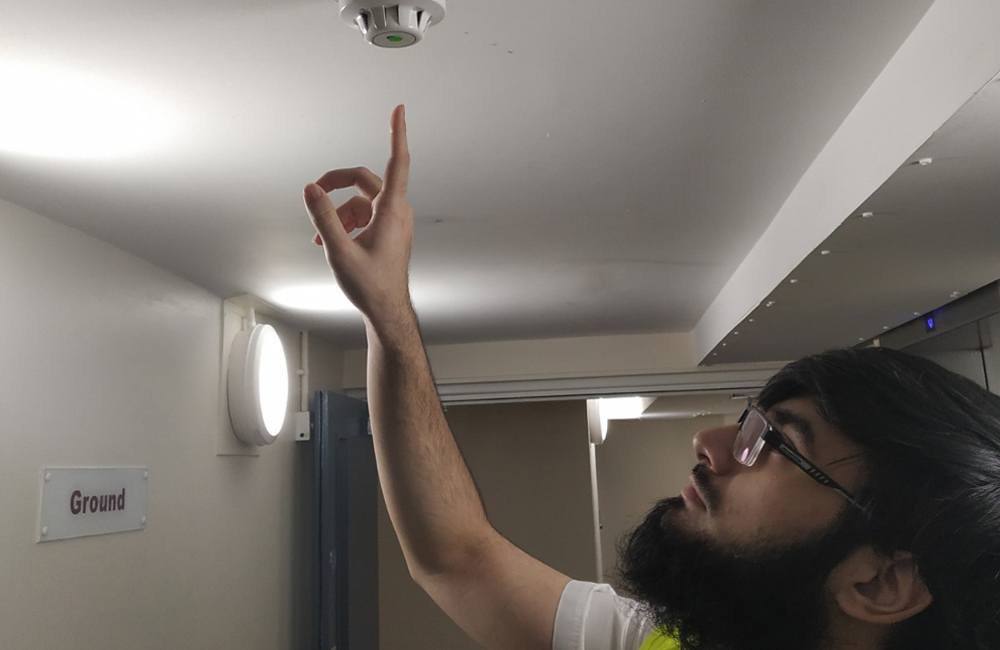
Fire safety should be a priority for any homeowner, but for those living in high rise buildings with cladding condemned as a serious fire risk it is absolutely critical to have the right detection and response measures in place.
Finding the best fire safety solutions is a stressful task, especially considering just how high the stakes could be but luckily v360 are here to help.
We are one of the UK’s leading providers market leading fire and security systems and provide waking watch services in high-rise buildings across the nation.
This guide will tell you everything you need to know about waking watch, how it works, what the advantages and limitations of it are, and what might be a more appropriate alternative for your needs.
What is waking watch?
Waking watch is a fire safety measure introduced in the UK in the aftermath of the tragic Grenfell Tower fire in 2017.
To give some sort of peace of mind to those living in other high-rise properties with the same condemned cladding installed, the waking watch is a system that involves fire marshals patrolling the property 24 hours a day and raising the alarm in the case of a fire.
Should a fire break out, it is the responsibility of a waking watch officer to alert all residents, contact the emergency services, and oversee the emergency evacuation.
Who needs a waking watch service?
If you live in a high-rise property of any kind, including apartment blocks and commercial office buildings, and a survey has found that the cladding on your building of the materials inside the walls pose a significant fire risk, you may require a waking watch service.
It is the responsibility of the building owner or manager to ensure the safety of all those within the property, so it is up to them to arrange and organise a waking watch.
It is recommended that a waking watch is put in place alongside other fire safety measures such as standard fire alarms (not enough on their own to protect a high-risk property) as a temporary measure until the issue of the cladding has been resolved or a common integrated alarm system has been installed.
What do waking watch officers do?
In accordance with the National Fire Chiefs Council (NFCC), a waking warden has 4 main areas of responsibility when on duty in a high-rise property.
These are:
1. Identification
Every 15 minutes waking wardens will conduct an extensive search of the entire building, examining every single floor and the exterior for any signs of a fire.
They will also survey the property for any potential fire hazards and check that all fire escape routes are free of obstacles that could interfere with evacuation.
2. Raise the Alarm
If a fire is detected on site, it is the responsibility of waking watch wardens to alert all residents to the threat as quickly as possible.
They will also contact the emergency services to ensure a rapid response.
3. Manage the evacuation
One of the main purposes of the waking watch being introduced was to facilitate a switch to a simultaneous evacuation strategy for high risk properties and professional fire wardens will ensure that this is carried out correctly.
Waking watch officers will oversee the full evacuation of the property ensure that alol residents are directed away from the incident area and monitoring the situation until the emergency services arrive.
4. Working with the fire service
Once the fire service arrives at the property, waking watch officers will liaise with them, briefing them on the situation and providing key information such as the location of the fire and whether a full evacuation has been successful.
This information can be critical to the fast suppression of a fire and limiting the threat to life and property damage done.
What is the alternative?
Waking watch conducted by highly trained fire marshals is an effective temporary fire safety measure.
However, given the cost of employing a physical officer 24 hours a day, in the long-term a more cost-effective alternative needs to be found.
For buildings with condemned cladding there are only 2 alternatives to waking watch:
- Have the cladding replaced
- Install a common alarm system
Whilst the obvious and ideal option is always to have the cladding replaced, this is extremely expensive and can take several years to happen.
For this reason, it is recommended that you have a common fire alarm installed as soon as possible as this will be just as effective at detecting fires, alerting the entire building, and allowing for simultaneous evacuation as waking watch, but at a much lower cost.
It is estimated that after the initial cost of installation has been overcome, the ongoing cost of a common fire alarm system for each resident of a high-rise building is 82% LOWER than that of waking watch.